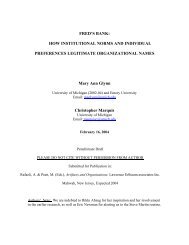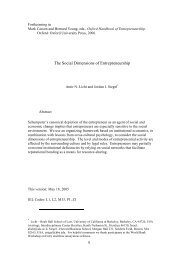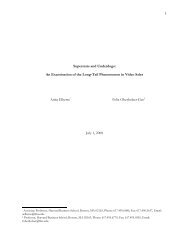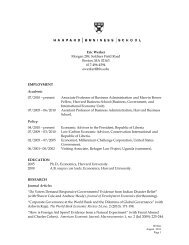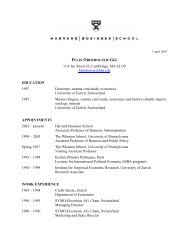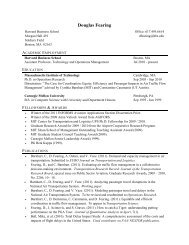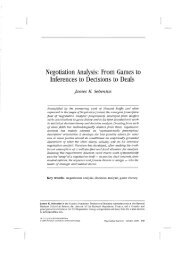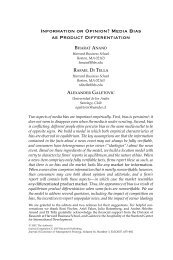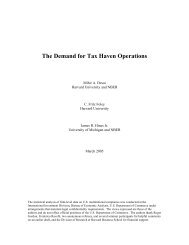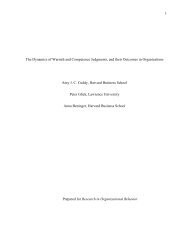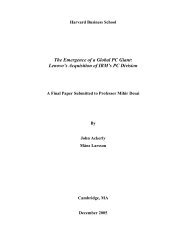A Note on Valuation Models: CCFs vs. APV vs WACC - Harvard ...
A Note on Valuation Models: CCFs vs. APV vs WACC - Harvard ...
A Note on Valuation Models: CCFs vs. APV vs WACC - Harvard ...
You also want an ePaper? Increase the reach of your titles
YUMPU automatically turns print PDFs into web optimized ePapers that Google loves.
N<strong>on</strong>e of the comp<strong>on</strong>ents of the cost of capital are directly observable and therefore need to be<br />
approximated using various models and assumpti<strong>on</strong>s. The cost of equity is derived from the<br />
capital asset pricing model (CAPM) while the cost of debt can be estimated from the firm credit<br />
rating and default risk or from yields <strong>on</strong> publicly traded debt.<br />
However interest <strong>on</strong> debt is tax deductible so if we were to discount free cash flows from<br />
operati<strong>on</strong>s using Ra we would not take into account the value of the tax shield. Therefore the<br />
after-tax weighted average cost of capital (<strong>WACC</strong>) is used instead. <strong>WACC</strong> includes an<br />
adjustment to the cost of debt by the marginal tax rate (Tm):<br />
<strong>WACC</strong> = Rd x (1-Tm) x D/V + Re x E/V (= Ra – Rd x Tm x D/V)<br />
<strong>WACC</strong> is less than the opportunity cost of capital Ra because the cost of debt is calculated after<br />
tax as Rd (1-Tm). Thus the tax advantages of debt financing are reflected in a lower discount<br />
rate. The <strong>WACC</strong> equals the opportunity cost of capital when there is no debt and declines with<br />
financial leverage because of increasing interest tax shields. The <strong>WACC</strong> increases again when<br />
the debt level becomes significant relative to the value of the firm reflecting the main costs<br />
associated with borrowing, the costs of bankruptcy.<br />
Figure 1: <strong>WACC</strong> as a Functi<strong>on</strong> of the Debt Ratio<br />
Rates of Return<br />
Re<br />
R<br />
<strong>WACC</strong><br />
Rd<br />
Debt to Equity<br />
Discounting all future cash flows using a c<strong>on</strong>stant <strong>WACC</strong> assumes that the company manages its<br />
capital structure to a fixed debt to value ratio (D/V). Therefore the company’s <strong>WACC</strong> is the right<br />
discount rate <strong>on</strong>ly if the company’s debt ratio (D/V) is expected to remain reas<strong>on</strong>ably close to<br />
c<strong>on</strong>stant. However if the company is expected to significantly change its capital structure (i.e.<br />
Fabrice Bienfait IFM Final Paper Page 3 of 8



